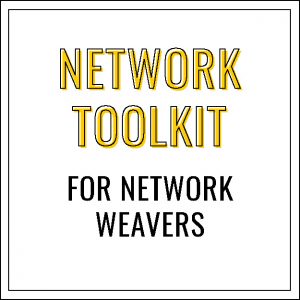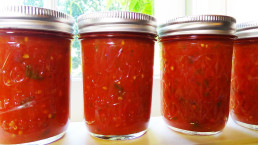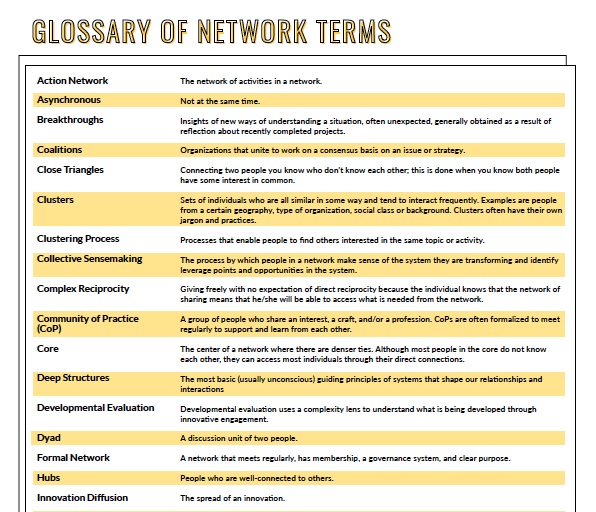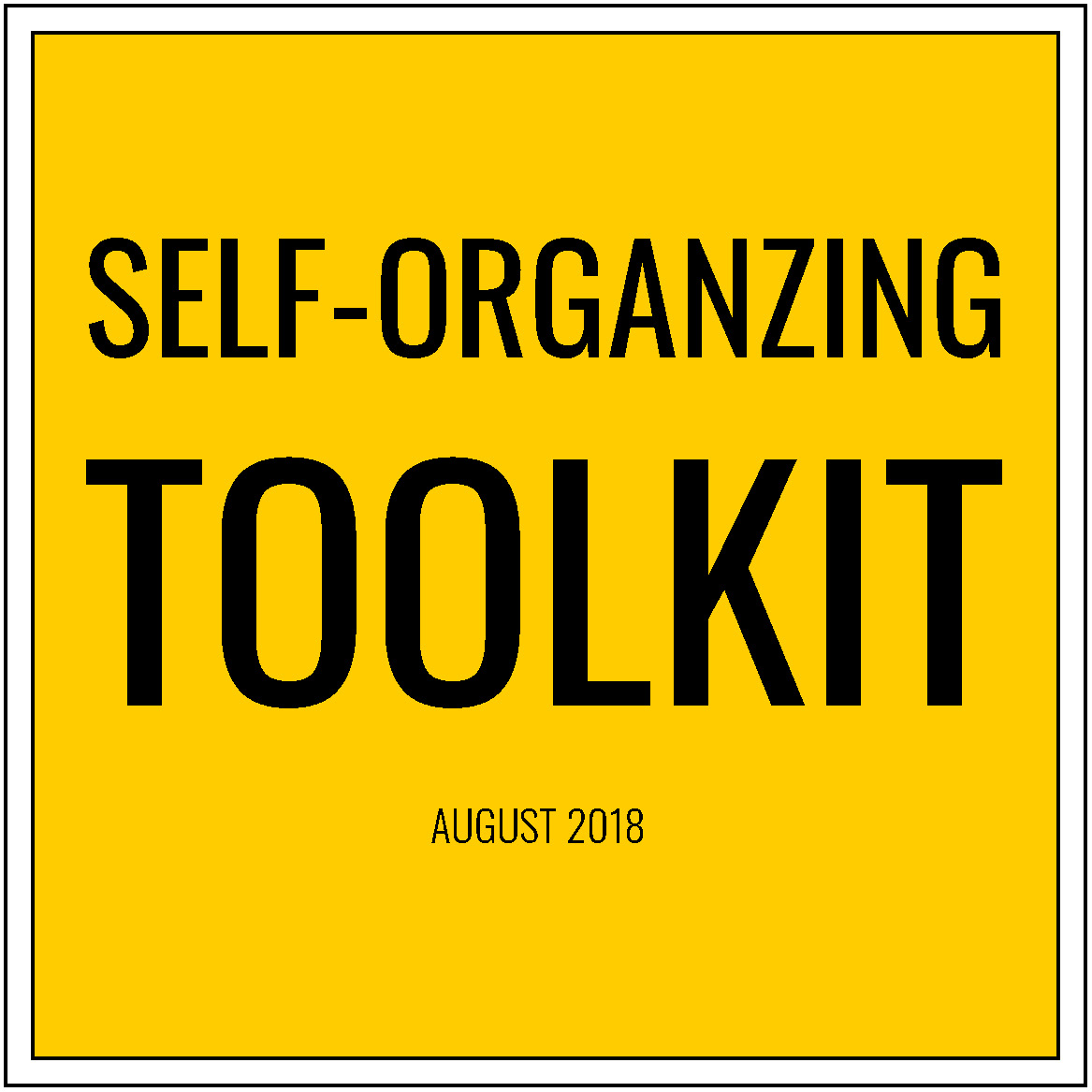Network Training Slide Decks
We are offering a new section in our Resources section: a set of presentation slide decks that can be used by you for training or sharing with people who want to learn more about networks.
You can edit or mix and match any of the slides into a custom slide deck that will work best for your audience. All the slides are creative commons but please do credit the networkweaver site in your final slide deck.
The first two decks are Network Basics and Network Skills.


If you have presentations that you have created and are willing to share please send to NetworkWeaverManager@gmail.com and we will include in our Resources section.
How To Map Networks: Understand Basic Elements Of Networks (Agile Praxis)
WHAT IS A NETWORK?
Social networks have existed since the discovery of fire. Although we have always expressed ourselves through language, feelings and body language, and our relationships with others are evident in the networks we make, we are now more aware of this. It is now time to become even more aware of our collaborative power.
Download How to Map Networks HERE
A Network Connector Story
[ap_spacing spacing_height="20px"]
First, An Introduction [ap_spacing spacing_height="25px"]
For a long time, we've trained our eyes to see things with edges and boundaries: organizations, countries, selves. Things with edges and boundaries feel manageable and solid. [ap_spacing spacing_height="10px"]
But the world is changing at an alarming rate, and the old ways of seeing are not quite up to the vertigo of a fast-paced universe. We need new ways of understanding our world that take into account new possibilities. [ap_spacing spacing_height="10px"]
So, we start noticing networks –the relationships among people and the patterns those relationships create. Increasingly, we are realizing that it’s through networks that things get done. People go outside teams, organizations, and even countries to connect with those who can help them succeed. And, using social media, we can now collaborate and engage as easily with people around the globe as we can with people in our hometown. [ap_spacing spacing_height="10px"]
We soon start to notice that all networks aren’t the same. Certain patterns in networks, such as a hub and spoke, are great when you want control. But when you need lots of innovation and aren’t at all sure what will work, bringing together people from different networks who have different perspectives and backgrounds can generate transformative experimentation. [ap_spacing spacing_height="10px"]
But bringing together people effectively is not easy. It requires a whole set of new skills embodied in a new role we call a Network Weaver. A Network Weaver is someone who is aware of the networks around them and explicitly works to make them healthier (more inclusive, bridging divides). Network Weavers do this by connecting people strategically where there's potential for mutual benefit, helping people identify and join with others around their passions, and serving as a catalyst for self-organizing groups. [ap_spacing spacing_height="40px"]
A Tale of Network Connecting [ap_spacing spacing_height="20px"]
Nestled in the Appalachian foothills of southeastern Ohio is the ACEnet Food Ventures Center, a kitchen incubator where people can rent the use of equipment to process specialty food products. The goal of the Center is to help as many people as possible start local food businesses, even if they have very little money (as is the case for many people in this region). [ap_spacing spacing_height="10px"]
From the start, ACEnet staff knew they did not have the resources to provide entrepreneurs with the assistance they needed to be successful, so they developed another strategy. They spent much of their time strategically connecting entrepreneurs with each other. Here’s a typical scenario. [ap_spacing spacing_height="10px"]
It was a blue-sky October afternoon in 1995, and Bill –network weaver extraordinaire –was standing on the loading deck of the newly completed kitchen Incubator where start-up entrepreneurs came to make their specialty food products. Craig, from Frog Ranch Salsa, was loading cases of his award-winning product into his truck and grousing about the high cost of jars. [ap_spacing spacing_height="10px"]
Right then, another truck pulled up to the dock, and Betty – one of the owners of another salsa producer – hopped out and started unloading cases of empty jars that would be filled later that day. Bill immediately introduced Craig to Betty, encouraging them to compare notes about the quality of tomatoes that season and local bands that were playing in town that weekend. [ap_spacing spacing_height="10px"]
Network Weavers are continually making connections between people –but they are always connecting strategically. They point out commonalities that create a foundation for mutual benefit. They also help people figure out if they have the kind of personal and emotional connection that will enable them to do things together. [ap_spacing spacing_height="10px"]
The two were now laughing and joking, so Bill introduced an opportunity. They both used the same jar for their salsa. Couldn’t they order jars together and significantly lower the price? Craig and Betty both thought this idea had some real potential, so Bill helped them figure out how it might work. [ap_spacing spacing_height="10px"]
Network Weavers help people self-organize. They start with twosies –fairly simple activities that benefit both individuals. They coach rather than run the show. As a result, the two individuals are more thrivable: together they have freed up more money for their businesses and they now have a set of collaboration skills that can be used in many other situations. [ap_spacing spacing_height="10px"]
The first order worked out without a hitch. The next time Bill saw Betty, he suggested that they might want to include several other businesses who used the same size jars in the next order so they could lower the price even more. Soon the joint orders filled an 18-wheeler and the cost of the jars was one-third the cost they had paid when they ordered singly. Now they got it: they could come up with all kinds of ways that they could improve their business and the community, find others to join them and make something happen. In the next few years, the people involved in the jar orders became Network Weavers themselves and, with many others, organized two different festivals, a regional brand, a loan fund, a food policy council, an innovation fund and many more collaborations. [ap_spacing spacing_height="10px"]
Through modeling and coaching, Network Weaving encourages people to act their way into a new way of being. Network Weaving increases thrivability both for individuals and their communities as people gain the framework, skills, and processes they need to co-create wonderful communities. [ap_spacing spacing_height="10px"]
When people take on the role of Network Weaver, they take responsibility for working with others to create healthier networks. [ap_spacing spacing_height="20px"]
We encourage you to comment on this post so we can hear about your thoughts and experience.
[ap_spacing spacing_height="60px"]
Communities of Practice for Network Weavers
The most effective way for people to build their skills as Network Weavers is to set up a Community of Practice –a group of people who share an interest in developing skills in a particular area. [ap_spacing spacing_height="10px"]
A Community of Practice encourages people to identify their learning needs and organize training, coaching, and peer support to meet those needs.
Participation in a Community of Practice is voluntary: we find that usually those eager and natural Network Weavers form a core group, but as they employ network weaving in their work, others see the benefits and become interested in building their skills as well and become more active.
A successful Network Weaver Community of Practice begins initially with some external training, since there are few highly skilled Network Weavers at this point. It’s usually effective to have a small core group of natural Network Weavers work with the trainer so that they quickly are able to conduct much of the training themselves.
Those individuals might have extra sessions to read and discuss resources that could deepen their understanding of networks and self-organizing so they are working from a strong theoretical base. The external trainer(s) could then focus on coaching this core group.[ap_spacing spacing_height="20px"]
Peer Assist
A core practice of a Community of Practice is the peer assist. This is where one individual, project group, or network has a challenge and seeks the thinking and advice of others in the Community of Practice. [ap_spacing spacing_height="10px"]
THE PROCESS IS:[ap_spacing spacing_height="5px"]
- The individual or group presents their situation and the challenge it is facing.[ap_spacing spacing_height="10px"]
- Those listening then ask clarifying questions which are answered.[ap_spacing spacing_height="10px"]
- Those listening then provide ideas, questions, and suggestions; they suggest sources of information or other cases that may help the challenge group.[ap_spacing spacing_height="10px"]
- The challenge group then responds.[ap_spacing spacing_height="10px"]
- The listeners talk about how this gave them ideas for their own network or project.[ap_spacing spacing_height="10px"]
- The entire group reflects on the session and insights gained.[ap_spacing spacing_height="10px"]
- The group determines whether there are any next steps or whether they want to continue the discussion in any way.
A peer assist can be 30-60 minutes long.
Here are some comments about the benefits of peer assists from participants in a recent Community of Practice:
“It was great to show my network how to build trust among our volunteers who are spread out statewide and may not have ever even met each other.”
“From my peer assist I took away the concept of planning in chunks --giving network participants a broad learning trajectory but doing detailed planning in small chunks in order to leave space for addressing emergent interests / needs.”
“I gained good ideas from my colleagues of ways to approach networks and a variety of traditional and social media tools to incorporate to enrich the experience for the entire network.”
“It gave me a better view/perspective on how other networks apply network weaving within their own agencies. I was also able to get additional resources and information how to better address the issues that arise from our network. I also love the personal stories and the friendships forged from the exercise.” [ap_spacing spacing_height="20px"]
Learning Popup
Another activity, called a learning popup, supports on learning about a specific topic. An individual identifies something that he or she wants to learn and invites others to join in a learning popup. They may need to bring in an expert, or one of the participants may have advanced knowledge in the area. The group meets, determines a learning agenda and sets up one or more sessions to complete this agenda.
It’s very easy to hold Communities of Practice on zoom.us, an easy-to-use video conferencing platform.
For further learning, see Abby Yanow's post on Best Practices for Communities of Practice.
[ap_spacing spacing_height="20px"]
We encourage you to comment on this post so we can hear about your thoughts and experience.
[ap_spacing spacing_height="20px"]
[ap_spacing spacing_height="20px"]
Glossary of Network Terms
All the network jargon got your head spinning? This two page handout has dozens of words commonly used in network circles and their definitions. Download and pass on to everyone in your network(s).
[ap_spacing spacing_height="15px"]
Network Toolkit for Network Weavers
 Want to know how start with network building?
Want to know how start with network building?
This free toolkit offers a set of activities you can incorporate into your next gathering to set you on a path to an effective network.
It includes speed networking, PostIt note mapping, closing triangles and other processes that anyone can easily facilitate.
Network Weaver Free Resources Package
Each week, we add a new free item to our store.

This week we are offering: Network Weaver FREE RESOURCES PACKAGE.
ALL of the free resources currently available at the Network Weaver Resource Page in one complete downloadable file.
Network Strategies For Your Network
The following video is about 20 minutes long and provides a short overview of network strategies. It was done for the Food Policy Network State Networks, who graciously agreed to let me share it.
The video emphasizes the importance of being part of networks of networks and of catalyzing self-organizing to move us to a more experimental, learning and viral space. Increasingly I’m seeing networks of networks and self-organizing as the key factors needed to shift systems.
[ap_spacing spacing_height="30px"]
Self-Organizing Toolkit
A new free resource is available in the Resources section of Network Weaver.
The self-organizing toolkit includes a set of simple actions that you can take to jump start self-organizing in your organization or network.
It includes a clustering activity for meetings to help people find others interested in the same or similar activities and surveys that can be used to help people cluster. In addition, it detailed the three roles that you can take to support self-organizing by being a project coach, setting up a communications system, and setting up a community of practice for projects.
The toolkit also includes sample google docs and spreadsheets that you can use so that projects can stay on track. Finally, the toolkit discusses how to set up an Innovation or Seed Fund to provide financial incentives to self-organized projects.
The Promise of Co-Design
[ap_spacing spacing_height="20px"]Co-Design Series Part 2[ap_spacing spacing_height="28px"]
THE WHY[ap_spacing spacing_height="15px"]
Co-design is a process that guides a group of people through various iterations of coming together to create something. This something might be a product, an activity, a project or a service. In fact, much of what is happening in networks is collaborative invention rather than traditional decision-making. Most decision-making in networks is done in collaborative projects as they are experimenting and creating something new. [ap_spacing spacing_height="15px"]
Co-Design Is [ap_spacing spacing_height="15px"]
- POWERFUL. Co-design is a way of working together that assumes we all have something to contribute. The process distributes power to participants, utilizing each individual’s unique perspectives, expertise, and skills to create something new. [ap_spacing spacing_height="15px"]
- COLLABORATIVE. Co-design employs processes that bring together many perspectives and capacity levels of participants. The processes are flexible, encourage collaboration, and incorporate reflection, and can change over time as the group’s goals change and adapt.[ap_spacing spacing_height="15px"]
- TRANSFORMATIVE. Co-design and the culture change it requires can help us toward our bigger goals of social transformation, as we create new ways of engaging with each other and our own communities.
[ap_spacing spacing_height="25px"]
THE WHAT[ap_spacing spacing_height="15px"]
To get a deeper sense of what co-design is, here are three definitions:
The co-design approach enables a wide range of people to make a creative contribution in the formulation and solution of a problem. … Facilitators provide ways for people to engage with each other as well as providing ways to communicate, be creative, share insights and test out new ideas. John Chisholm -- Senior Research Associate, Design Management, Lancaster University.
[ap_spacing spacing_height="10px"]
Participatory Design (PD) refers to the activity of designers and people not trained in design working together in the design and development process. In the practice of PD, the people who are being served by design are no longer seen simply as users, consumers or customers. Instead, they are seen as the experts in understanding their own ways of living and working. Elizabeth B–N. Sanders
[ap_spacing spacing_height="10px"]
Our definition: Co-design is a participatory, reflective, and adaptive process used to design and create. By centering participants as experts, it decentralizes decision-making and power, facilitating the transformative power of small groups.
[ap_spacing spacing_height="30px"]
THE HOW[ap_spacing spacing_height="15px"]
When utilizing co-design as a process, we are guided by the following principles as distinguished from conventional design processes:
[ap_spacing spacing_height="15px"]
Guiding Principles |
|
Conventional design |
Co-design |
Decision-making power |
|
| One person or a small group makes the majority of strategic decisions | Many people are engaged at many levels of a hierarchy (or across a network) in strategic decision-making |
Leadership and experts |
|
| A top-down, expert-led approach is utilized which offers limited opportunities for collaboration | Co-design honors participants as the true experts in their fields, creating many opportunities for collaboration throughout the design process |
Structure |
|
| Rigid structures (eg. a strategic plan) are used that lock the work and/or process in place after a decision is made | Co-design utilizes flexible formations that allow both the content of the work and the process to change over time |
Flexible engagement |
|
| Creates systems that maintain individuals at consistent levels of engagement with the work; individuals tend to be highly involved in design or not at all | Allows for individuals to participate at varying levels that may change over time; for example an individual may participate in the design group weekly, join monthly steering committee calls, or give feedback once in awhile |
Reflection, learning, and adaptation |
|
| Lacks reflection points or reflection is not used to inform growth and adaptation of the work | Reflection is a built-in, frequent process used to adapt strategies and priorities over the lifespan of the project |
Cultural shift |
|
| Promotes a dominant culture that disregards or actively excludes some voices and perspectives | Co-design opens us to new ways of working together by establishing a process that allows multiple individuals to take ownership and step into leadership roles |
Product versus process |
|
| Focuses on the end product and how individuals might interact with it | Co-design centers process (rather than end product) as a way to engage and continue engaging |
[ap_spacing spacing_height="25px"]
IN SUM[ap_spacing spacing_height="15px"]
Conventional design, decision-making, and creation processes focus power in one individual or a small group, creating a system that is less conducive to innovation and hinders emergence of new leaders.
[ap_spacing spacing_height="10px"]
We believe the process of co-design shifts these power dynamics, empowering participants to have ownership over the process and product. Because of this, we believe co-design can help networks respond to emergence, become more innovative, and foster transformation at both the individual and network level.
[ap_spacing spacing_height="10px"]
Almost every aspect of network action, operations and governance can benefit by using co-design processes. For example, when people are self-organizing collaborative projects, they can co-design what they are doing. When a network is articulating its purpose, it can do so through a co-design process asking network participants to work in small groups to generate what they would like to see in the purpose statement. When networks are planning a convening, they can do like Leadership Learning Community (LLC) has done and invite anyone who wants to be part of virtual sessions to co-design the gathering.
[ap_spacing spacing_height="10px"]
Inherent in co-design is the idea that all individuals have perspective, experience, and expertise to bring to the table. This means we’d also love to hear your perspective on co-design! Have you seen co-design techniques used in your network? How could you envision co-design supporting your small group?
[ap_spacing spacing_height="25px"]
Read Part 1 of the Co-Design Series HERE










